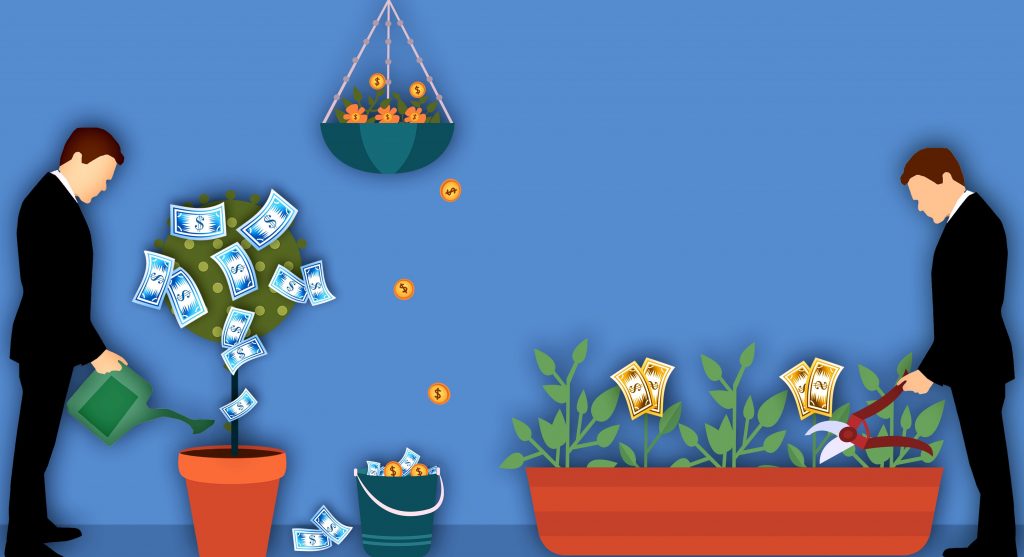
For years, there has been debate over whether the dollar should remain the primary currency used in international commerce. In 1960, economist Robert Triffin wrote that America would only have current account deficits if other countries relied on the dollar, which would offset the benefits of zero exchange rate risks and heightened political clout.
During the 2008 financial crisis, China said the dollar couldn’t continue as the global reserve currency because America’s lending and financial practices nearly caused a worldwide economic meltdown. When Donald Trump took office in 2017 with his “America First” agenda and ensuing trade wars (See story p.XX), economists again were concerned. “It is only under President Donald Trump that America has used its powers routinely and to their full extent, by engaging in financial warfare,” wrote The Economist in January. “The results have been awe-inspiring and shocking. They have, in turn, prompted other countries to seek to break free of American financial hegemony.”
The advent of COVID-19 laid bare how currency investors perceive the dollar. “The world’s reserve currency benefited in a big way from a flight to safety, which drove it to a three-and-a-half-year high in March as the coronavirus pandemic spread to the United States,” reported Patti Domm, CNBC’s markets editor, in July. “As the world’s focus has shifted back to fundamentals, the dollar has rapidly slumped to a two-year low.”
Economists now question how long the slump will last. “Some investors wonder if this is a sign of a long-term trend reversal … [or] if it’s changing for no other reason than currency moves are cyclical,” wrote Ben Carlson of institutional assets management at Ritholtz Wealth Management, in a blog on the Fortune website in August. The answer will profoundly affect Egypt and other emerging markets that depend on the dollar to import essential goods.
Understanding the system
Toward the end of World War II, America met with its allies, including Russia (then the USSR), the UK and other European countries, to agree on an international monetary system to replace the gold standard. “That cemented the dollar as the central global currency,” said Daniel Hui, a Global FX Strategist at JPMorgan, to the Wall Street Journal in August.
The dollar’s value became the main factor when pricing commodities, and several developed and emerging economies — GCC countries, for example, and Lebanon — started pegging exchange rates to the greenback. Other countries, including Egypt, actively manage their currency’s value against the dollar. For example, the dollar’s value declined 9.7 percent from March to September, while the Egyptian pound slipped about 2.7 percent.
Meanwhile, international business transactions have been mainly using dollars for decades, creating a strong correlation between the currency’s value and global market movements. “When the dollar is up, gold and foreign developed and emerging market stocks tend to perform poorly. And when the dollar is down, gold and foreign developed and emerging market stocks tend to perform admirably,” wrote Carlson. “The dollar is, of course, not the only variable that affects these markets and prices, but it plays a larger role than most investors realize.”
According to the Bank of International Settlements, 62 percent of central banks’ international currency reserves is in dollars, while 20 percent is in euros. Meanwhile, 47.4 percent of issued debts (treasury and corporate) are in the U.S. currency. As of December, 60 percent of international trade was in dollars. Additionally, Jefferies Financial Group Inc. estimated that sales of 40 percent of non-American companies worldwide are affected by dollar fluctuations.

Downward pressures
Since the World Health Organization announced the COVID-19 pandemic on March 11, the dollar has been on a roller-coaster ride. The greenback’s value jumped 8.6 percent between March 9 and 20. However, when New York governer Andrew Cuomo announced a state-wide lockdown for all but essential workers, the dollar began a downward spiral. “After gaining initially as a safe haven in the pandemic, the U.S. dollar is getting clobbered against global currencies,” wrote Domm.
Another factor hurting demand for the dollar is a volatile stock market. The Dow Jones Industrial Average declined from 28,992 points on February 21 to 18,591 points by March 23 to recover to 23,775 a month later. “The fastest selloff in risk assets in history followed by the fastest rally showed extraordinary volatility tied to currency markets,” noted George Boubouras, head of research at K2 Asset Management in Melbourne, as reported by Yahoo! Finance in August. “You do have to be cognizant of currency risks far more.”
The relative stability in the index that followed (on August 28, the Dow reached 28,653 points) wasn’t comforting for stock market investors. “The disconnect from basic human suffering is shocking,” said Robert Jenkins, global head of research at Refinitiv Lipper Research, to CNBC in June. Howard Silverblatt, a senior index analyst at S&P Dow Jones Indices, agreed: “The market is saying, ‘We know where we are today, but where are we going tomorrow?’ In this case, tomorrow is 2021.”
Meanwhile, other currencies look more attractive. “The eurozone continues to show massive economic recovery. The monetary stimulus has caused a fresh uptick in the bloc, improving the euro currency rate significantly,” noted an analysis by Foreign Exchange Live, a trading platform, in July.
Despite the Japanese government’s efforts to keep its currency from strengthening, the yen’s value has increased due to rising global demand. “The escalating U.S.-China trade war and the yen’s rise are negative factors for Japan’s economy,” said Yoshiki Shinke, chief economist at Dai-ichi Life Research Institute, in August. “There’s a pretty good chance the timing of a pick-up in exports could be delayed.”
The third major global currency, the yuan, has also attracted currency investors. “In each and every category of fundamentals, China beats the U.S. and – given the vast Chinese outperformance in coping with the COVID-19 pandemic – it should continue to move further ahead,” wrote Uwe Parpart, chief strategist of ideanomics and chairman of Asia Times Holdings, in August.
John Authers, a senior editor for markets at Bloomberg, believes “the critical flaw in the dollar … has been deterioration in the public health situation in the United States, while other countries continued to have the virus under some kind of control,” he wrote on the company’s website in August. “The resurgence being seen in the virus is posing a speed bump in the reopening and recovery process.”
According to Johns Hopkins University, the United States is still witnessing growth in confirmed cases, from 309,699 April 4 to 5.8 million August 26. That translates to poor economic recovery as businesses can’t go back to work as usual. “We have some kind of global recovery going on and some countries are doing better than others. The United States is among those doing the worst,” said Jens Nordvig, CEO of Exante, an investment firm, to CNBC in July.
As a result, fewer investors and countries want to use the dollar, which causes a decline in its value. “The move against the dollar is now broadening, not only more countries, like emerging market currencies, but also … asset managers, speculators and the other big groups … [are] joining the bearish-on-the-dollar party,” said Marc Chandler, chief market strategist at Bannockburn Global Forex, to CNBC in July.
“The dollar being weaker is a sign of positive risk sentiment,” said Amo Sahota, executive director at currency advisory firm Klarity FX, to CNBC in August. “The market is moving to places that would give a better return and more comfortable in buying the Australian dollar, euro and even the [British] pound.”
Another obstacle facing America’s economic recovery is Congress’s inability to agree on a second stimulus package. “The stalemate … is troubling,” said Sahota. “Sticking more band-aids over it, which is what the administration is trying to do right now, is not enduring.”
U.S. Treasury Secretary Steven Munchin said, “the White House and top democrats in Congress may not be able to reach a deal on coronavirus aid,” CNBC reported.
Still, another $2 trillion in assistance won’t do the greenback any favors. “The dollar may also be paying the price of growing U.S. deficits [caused by the stimulus packages], which will have to [be] paid for with more and more Treasury debt,” wrote Domm in an August blog on CNBC.
Investors at crossroads
The dollar’s fall has investors conflicted over whether to commit to holding onto the greenback or invest abroad using other currencies. “Headwinds caused by the COVID-19 pandemic have made investors reconsider the traditional risk-return dynamic of asset classes,” wrote Adriaan Pask, chief investment officer at PSG Wealth, in a blog on Money Web, an investment portal. “They realized that risks can be found anywhere in the investment world … even in developed markets – considered a safe bet in the previous cycle.”
Pask believes that emerging markets are a better bet. For the past 10 years, stock exchanges have been “underperforming” due to the “strength of the U.S. dollar,” he wrote in his blog. “The impact of the strong U.S. dollar has placed massive strains on emerging market economies and investments.”
Now that the dollar’s value has been slipping for six months, emerging market stock exchanges may reap some benefits. Egypt’s EGX 30, for example, fell from 12,347 points on March 8 to 8,756 on March 18, roughly the period when the dollar was gaining strength. From then on, its value increased to 11,462 points as the dollar lost value against global currencies. “Cheap dollar funding encourages risk-taking and money flows into perceived ‘higher growth’ locales,” said Thomas Hayes, chairman of Great Hill Capital LLC.
That risk is looking like less of a concern as more emerging economies come out of COVID-19. According to the IMF in its April 2020 note: “Emerging markets should outperform their developed counterparts and recover much faster.”
Other investors argue the dollar’s decline increases its value and, therefore, they prioritize investing in America. “We focus on quantitative factor data and fundamentals … currency and fund flows can confirm strength in a particular region or country,” said Philip Kim, a portfolio manager at Morgan Stanley Investment Management in Chicago.
JP Morgan published a report in July saying the declining dollar makes U.S. stocks more valuable than those listed on foreign exchanges. “With strong domestic demand and sustainable earnings growth from certain sectors, we believe the U.S. equity market is still favorable now and the currency effect could be offset by the return from capital,” said Nixon Mak, a strategist at Invesco Ltd.
Authors of Bloomberg stressed the “issue is how long it takes to bring [the COVID-19 virus] back under control.” The longer it takes, the less likely the dollar will recover to pre-pandemic levels, he warned.







